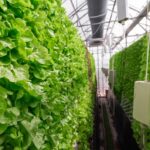Livestock farming plays a vital role in providing food and livelihoods for millions of people worldwide. However, one of the significant challenges faced by livestock farmers is protecting their herds from predators. Predation can lead to substantial economic losses and emotional distress for farmers. To mitigate these risks and ensure the safety of their animals, farmers employ various effective strategies. Here are some proven methods for protecting livestock from predators:
- Fencing and Enclosures:
Erecting sturdy fences and enclosures is one of the most fundamental and effective ways to keep predators away from livestock. Electric fencing, woven wire fences, and predator-proof enclosures can create physical barriers that deter predators from accessing vulnerable animals. - Guard Animals:
Introducing guard animals such as livestock guardian dogs (LGDs), llamas, or donkeys can provide an additional layer of protection for livestock. These animals form bonds with the herd and exhibit protective behavior, warding off potential predators. - Livestock Guardian Dogs (LGDs):
Specifically bred and trained to protect livestock, LGDs are highly effective at deterring predators such as coyotes, wolves, and bears. LGDs patrol the perimeter of the herd, bark to alert predators, and confront threats when necessary. - Animal Husbandry Practices:
Implementing sound animal husbandry practices can reduce the risk of predation. This includes avoiding overgrazing, providing adequate shelter and supervision for livestock, and rotating pastures to minimize exposure to predators. - Night Penning:
Confining livestock in secure pens or enclosures at night can significantly reduce predation risk when predators are most active. Night penning ensures that animals are protected during vulnerable periods, minimizing losses. - Livestock Guardian Animals:
Some livestock species, such as llamas and donkeys, naturally exhibit protective behavior towards other animals. Introducing these guardian animals into livestock herds can help deter predators and enhance overall herd safety. - Predator Deterrents:
Deploying deterrents such as motion-activated lights, sound devices, or predator alarms can startle and deter predators from approaching livestock areas. These non-lethal methods help create an unwelcoming environment for predators without harming them. - Livestock Monitoring and Surveillance:
Regular monitoring and surveillance of livestock herds allow farmers to detect signs of predation early and take appropriate action. Using trail cameras, drones, or hiring shepherds can help farmers keep a close eye on their animals and detect potential threats. - Community Collaboration:
Collaborating with neighboring farmers, wildlife conservation organizations, and government agencies can strengthen efforts to protect livestock from predators. Sharing information, resources, and best practices fosters a collective approach to predator management. - Predator Exclusion Devices:
Installing predator exclusion devices such as predator-proof gates, grates, or baffles on livestock enclosures can prevent predators from gaining access to vulnerable animals while still allowing livestock to move freely. - Livestock Identification and Tracking:
Tagging livestock with identification markers or using GPS tracking devices can aid in locating and retrieving animals in the event of predation. This technology also helps farmers monitor livestock movements and identify potential patterns of predation. - Predator Control Programs:
Participating in government-sponsored predator control programs, where applicable, can help mitigate predation pressure on livestock. These programs may involve targeted removal of problem predators or habitat management strategies to reduce predator populations.
In conclusion, protecting livestock from predators requires a multifaceted approach that combines physical barriers, guardian animals, deterrents, and proactive management practices. By implementing these effective strategies, farmers can minimize predation losses, safeguard animal welfare, and sustainably manage conflicts between livestock and wildlife.
Join 'Farmers Mag' WhatsApp Channel
Get the latest Farming news and tips delivered straight to your WhatsApp
CLICK HERE TO JOIN






